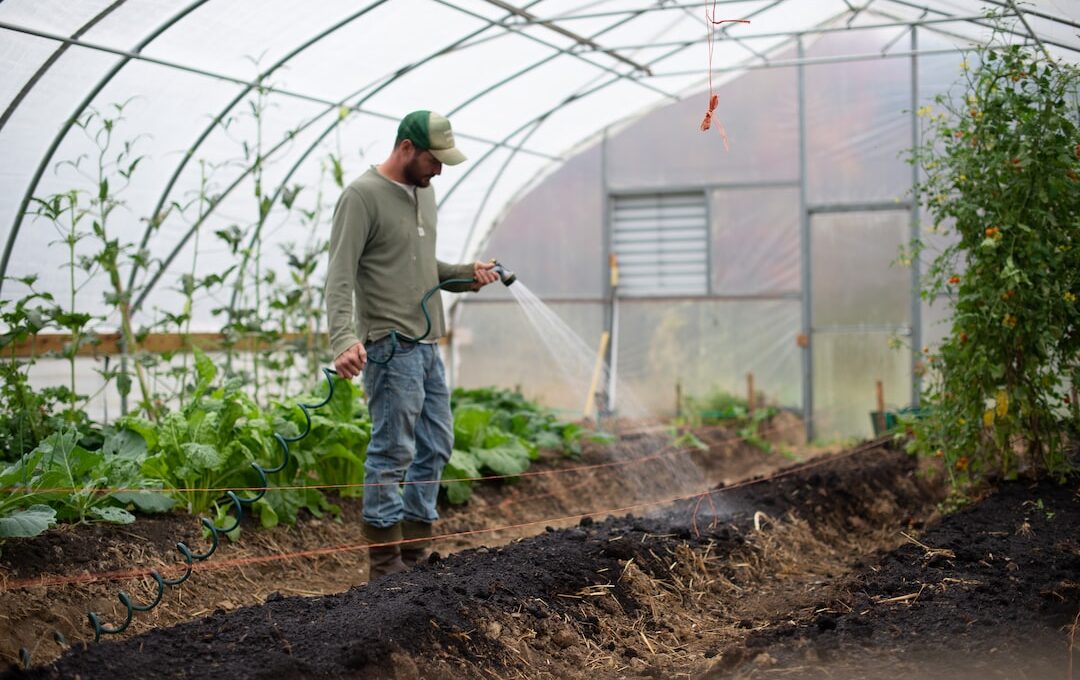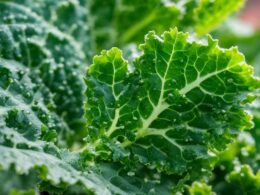Are you unsure about how often to water your Indian Hawthorn plants? Well, worry no more! In this article, we will guide you on the proper watering techniques to keep your Indian Hawthorn thriving and healthy.
When it comes to watering Indian Hawthorn, it’s crucial to consider the climate and weather conditions. The amount of water your plants require will vary depending on these factors. Checking the moisture levels in the soil is also vital as it determines the watering frequency.
Remember to water deeply and infrequently to encourage strong root growth. Using proper watering techniques, such as watering at the base of the plant and avoiding overhead watering, will prevent water-related diseases. Overwatering can be detrimental to your Indian Hawthorn, so make sure not to overdo it.
Additionally, adjusting the watering frequency based on the season is essential. During hot and dry seasons, your Indian Hawthorn may need more water, while in cooler months, it may require less.
Finally, regularly monitor the health of your plants to ensure they are getting the right amount of water.
So, let’s dive in and learn how to water your Indian Hawthorn safely and effectively!
Quick Summary
- Proper watering techniques are essential for the health and longevity of Indian Hawthorn plants.
- Water deeply and infrequently to encourage strong root growth.
- Adjust watering frequency based on the season.
- Monitor the health of Indian Hawthorn plants to prevent diseases.
Understand the Watering Needs of Indian Hawthorn
Indian hawthorn needs regular watering to thrive. To ensure the optimal moisture levels for your Indian hawthorn, it’s essential to establish a watering schedule. This will help you maintain a healthy and vibrant plant.
Watering your Indian hawthorn once or twice a week during the growing season is generally sufficient. However, keep in mind that the frequency may vary depending on your climate and soil conditions. In hot and dry climates, you may need to water more often, while cooler and more humid climates may require less frequent watering.
When watering, it’s important to provide a deep soak rather than a light sprinkle. This encourages the roots to grow deeper into the soil, making the plant more drought-tolerant. Additionally, avoid overwatering, as this can lead to root rot and other fungal diseases.
To determine when to water, check the soil moisture. Stick your finger about an inch into the soil near the base of the plant. If it feels dry, it’s time to water. On the other hand, if it feels moist, wait a few more days before watering again.
By following a consistent watering schedule and maintaining optimal moisture levels, you’ll provide the necessary care for your Indian hawthorn, ensuring its health and longevity.
Consider the Climate and Weather Conditions
Consider your local climate and weather conditions before determining how frequently to irrigate this particular plant species. Indian hawthorn is native to the southern United States, where it thrives in warm and humid climates. However, it can also adapt to a wide range of climates, including dry and arid regions.
When it comes to watering Indian hawthorn, it’s important to take into account the climate considerations. In hotter and drier climates, this plant may require more frequent watering to prevent it from drying out. On the other hand, in cooler and more humid climates, it may need less frequent watering as the soil retains moisture for longer periods.
To establish a watering schedule for your Indian hawthorn, pay attention to the weather conditions. If you’ve recently experienced heavy rainfall, you may need to hold off on watering until the soil has had a chance to dry out. Conversely, during periods of drought or prolonged dry spells, you may need to water more frequently to ensure the plant’s survival.
Remember, it’s always better to underwater than overwater Indian hawthorn. Overwatering can lead to root rot and other fungal diseases, which can be detrimental to the health of the plant. By considering your local climate and weather conditions, you can establish a watering schedule that meets the needs of your Indian hawthorn while ensuring its safety and well-being.
Check the Soil Moisture Levels
Take a moment to check how moist the soil is around your plant. Monitoring the moisture levels of the soil is crucial in ensuring the health and well-being of your Indian Hawthorn.
Here are some important techniques to help you monitor the soil moisture effectively:
- Stick your finger into the soil about an inch deep. If the soil feels dry at this depth, it’s time to water your plant.
- Use a moisture meter, which can provide you with accurate readings of the soil moisture levels. This tool takes the guesswork out and helps you water your Indian Hawthorn at the right time.
- Look out for signs of dehydration in your plant, such as wilting leaves or a dull appearance. If you notice these signs, check the soil moisture levels immediately.
- Consider using mulch around your Indian Hawthorn. Mulch helps retain moisture in the soil and prevents it from drying out too quickly.
Monitoring the soil moisture is important because it ensures that your Indian Hawthorn receives the right amount of water, preventing both overwatering and underwatering. By following these techniques, you can keep your plant healthy and thriving. Remember, maintaining proper soil moisture levels is essential for the overall safety and well-being of your Indian Hawthorn.
Water Deeply and Infrequently
To ensure the health of your plant, imagine the deep, refreshing drink it receives when you water it thoroughly but infrequently. Proper watering techniques are essential for the well-being of your Indian Hawthorn. Overwatering can lead to root rot and other problems that may harm your plant. It’s important to understand the signs of overwatering so you can adjust your watering schedule accordingly.
When it comes to watering your Indian Hawthorn, the key is to water deeply and infrequently. This means giving your plant a good soak, allowing the water to penetrate the soil deeply. This encourages the roots to grow deeper, which makes them more resilient and better able to withstand drought conditions.
To determine when it’s time to water, check the soil moisture levels. Stick your finger about an inch into the soil. If it feels dry at that depth, it’s time to water. It’s better to underwater than to overwater, so don’t be tempted to water too frequently.
Overwatering can cause the roots to become waterlogged, leading to root rot and other issues. Signs of overwatering include yellowing leaves, wilting, and a foul smell coming from the soil. If you notice any of these signs, reduce the frequency of watering and allow the soil to dry out before watering again.
By following these proper watering techniques and being mindful of the signs of overwatering, you can ensure the health and longevity of your Indian Hawthorn plant. Remember, it’s better to water deeply and infrequently than to overwater, so let your plant enjoy that satisfying, deep drink of water.
Use Proper Watering Techniques
To ensure your plant stays healthy, it’s important to master the art of proper watering techniques. By using effective watering methods, you can prevent overwatering or underwatering your Indian Hawthorn and promote its overall well-being.
One key technique is to water deeply and infrequently. This means giving your plant a good soak, allowing the water to penetrate deep into the soil, and then allowing it to dry out before watering again. This encourages the roots to grow deeper, making the plant more resilient to drought conditions.
Another important technique is to water at the base of the plant rather than overhead. This helps prevent the foliage from getting wet, which can lead to fungal diseases. Watering at the base also ensures that the water goes directly to the roots, where it is needed the most.
To help you understand the importance of proper watering techniques, here is a table outlining two common methods and their benefits:
| Method | Benefits |
|---|---|
| Drip irrigation | Efficient water use, reduces evaporation |
| Soaker hose | Targets the root zone, prevents leaf wetting |
By following these proper watering techniques, you can ensure the health and vitality of your Indian Hawthorn while conserving water and preventing potential issues.
What Is the Recommended Watering Frequency for Sage Plants?
The watering frequency for sage plants depends on several factors, including climate, soil type, and plant size. As a general rule, sage plants require watering once every 7-14 days, allowing the soil to dry out between waterings. However, it is crucial to monitor the moisture levels in the soil to ensure that it remains consistently moist, but not waterlogged. Overwatering can lead to root rot, while under-watering can hinder the plant’s growth.
Avoid Overwatering
Excessive watering can lead to detrimental effects on your plant’s well-being, so it’s crucial to be mindful of the amount of water you provide. Proper watering techniques are essential for the health and longevity of Indian Hawthorn. One common mistake that many gardeners make is overwatering, which can have serious consequences for your plant.
To avoid overwatering, it’s important to understand the signs that indicate your Indian Hawthorn is getting too much water. One of the first signs is yellowing or wilting leaves. If you notice that the leaves are turning yellow and feel mushy to the touch, it’s a clear indication of overwatering. Another sign is the presence of mold or fungus on the soil’s surface. Overwatering creates a damp environment that promotes the growth of these harmful organisms.
To prevent overwatering, make sure to water your Indian Hawthorn only when the top inch of soil feels dry. Stick your finger into the soil to check its moisture level. Additionally, ensure that the plant is in a well-draining soil mix and that the pot has drainage holes to allow excess water to escape.
By following these proper watering techniques and being aware of the signs of overwatering, you can keep your Indian Hawthorn healthy and thriving. Remember, a little caution can go a long way in ensuring the safety of your plant.
Adjust Watering Frequency Based on Season
Properly adjusting the frequency of watering for your plant throughout the changing seasons is essential for maintaining its health and ensuring its long-term survival. Indian Hawthorn plants have different water requirements depending on the season, so it’s important to adjust your watering schedule accordingly.
Here are some seasonal watering tips to help you keep your Indian Hawthorn thriving:
-
Spring: As the weather warms up, increase the frequency of watering to promote healthy growth. Water your Indian Hawthorn deeply and consistently, ensuring that the soil is moist but not waterlogged.
-
Summer: Indian Hawthorn plants are more tolerant of drought than excessive moisture. During the hot summer months, reduce the frequency of watering, but make sure to water deeply when you do water. This encourages the plant to develop a deep and robust root system.
-
Fall: As the temperatures start to cool down, gradually decrease the watering frequency. This helps the plant prepare for dormancy during the winter months. Water deeply but less frequently to maintain the plant’s health.
-
Winter: Indian Hawthorn plants are typically drought-tolerant, but they still require some water during the winter. Water sparingly, only when the soil is dry, to prevent excessive moisture and potential root rot.
By adjusting your watering schedule based on the season, you can ensure that your Indian Hawthorn plant receives the right amount of water throughout the year, promoting its health and longevity. Remember to always monitor the soil moisture and adjust your watering accordingly.
Monitor the Health of Your Indian Hawthorn Plants
Now that you know how to adjust the watering frequency of your Indian Hawthorn plants based on the season, it’s important to also monitor their health to ensure they thrive. By doing so, you can prevent diseases and catch any signs of overwatering before they become a bigger issue.
To prevent diseases in Indian Hawthorn, it’s crucial to provide them with proper care. Make sure to plant them in well-draining soil and avoid overcrowding, as this can lead to increased moisture and potential fungal growth. Additionally, prune any dead or diseased branches to promote air circulation and prevent the spread of diseases.
Keep an eye out for signs of overwatering, such as yellowing or wilting leaves, mold or fungus growth, or a foul odor coming from the soil. These are indicators that your Indian Hawthorn may be receiving too much water, which can lead to root rot and other diseases. Adjust your watering schedule accordingly if you notice these symptoms.
By closely monitoring the health of your Indian Hawthorn plants and taking preventative measures, you can ensure their well-being and create a safe environment for them to thrive in.
Frequently Asked Questions
Can Indian Hawthorn tolerate drought conditions?
Yes, Indian Hawthorn can tolerate drought conditions. It has good drought tolerance and doesn’t require frequent watering. This makes it a safe choice for those looking for low-maintenance plants.
How long does it take for Indian Hawthorn to establish its root system?
To establish a strong root system, water your Indian Hawthorn regularly during the first year, aiming for a consistent watering frequency. This will ensure the plant’s stability and promote healthy growth.
What are the signs of overwatering in Indian Hawthorn plants?
Signs of overwatering in Indian Hawthorn plants include yellowing leaves, wilting, and root rot. To prevent overwatering, make sure the soil is well-drained and only water when the top inch feels dry.
Is it necessary to water Indian Hawthorn during the winter months?
During the winter months, it is still important to water your Indian Hawthorn to ensure its survival. Winter watering is crucial in maintaining the health and safety of your plant.
Can Indian Hawthorn survive in areas with high humidity?
Indian hawthorns can survive in areas with high humidity but their growth rate may increase. However, they are more susceptible to fungal diseases. To ensure their safety, monitor and control humidity levels to prevent any potential issues.
Conclusion
To keep your Indian hawthorn plants healthy, it’s important to understand their watering needs. Consider the climate and weather conditions, and check the soil moisture levels regularly. Water deeply and infrequently, using proper watering techniques to avoid overwatering. Adjust the watering frequency based on the season. By monitoring the health of your Indian hawthorn plants, you can ensure they receive the right amount of water and thrive in your garden.
So, keep these tips in mind and enjoy the beauty of your Indian hawthorn plants all year round!









